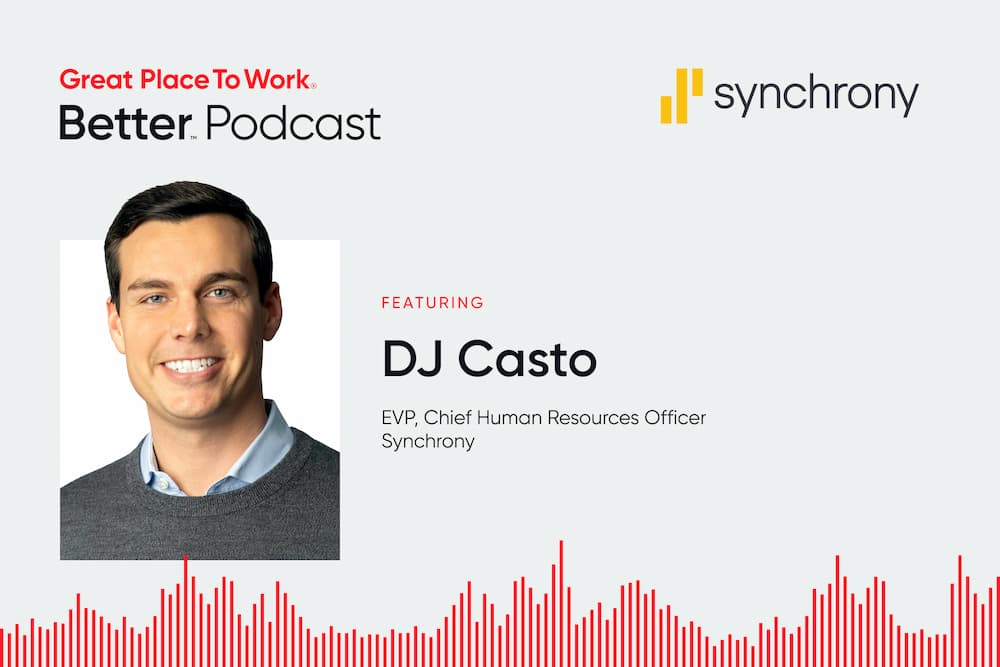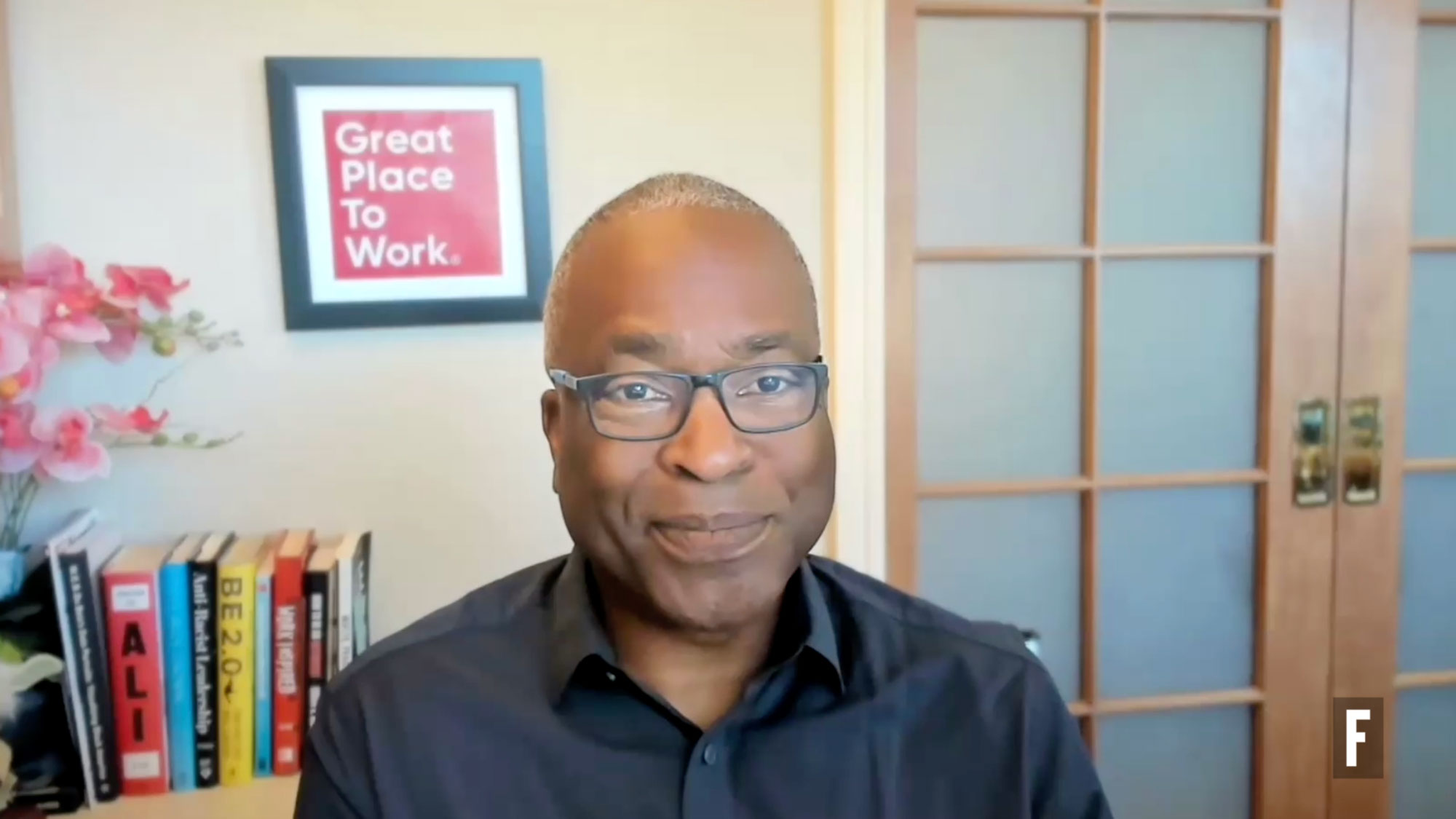
The smallest of gestures can have a huge impact. For proof, look no further than Pinnacle Financial Partners CEO Terry Turner.
An employee recalled how Terry showed him that everybody in the more than 2,200-person company matters, no matter where they sit in the organization chart:
“I had met Terry Turner only once at the time I was employed. About a month after my start date, we had our Christmas party. Terry was at the door greeting everyone who arrived, and he knew exactly who I was. Our first meeting I did nothing to stand out, nor am I a standout kind of person. But for him to know who I was with as many associates as we had at the time, it was extremely impressive. When the firm's leaders can remember who you are, it says something great about a company. I found this very unusual for a business of this size at the time, and knew this would be my home, for as long as they would have me.”
This employee’s experience is unusual. People often leave organizations after many years, having never interacted with their CEO, or only having seen him/her from afar giving a speech at the holiday party.
What if more leaders at the top of a hierarchy interacted with people—without the typical boardroom politics?
This question challenges basic assumptions of how a “traditional” boss interacts with people.
Our research indicates that leaders who relate with employees through egalitarian principles, create a , leading to greater feelings of equality in the workplace and significantly better business results than do leaders who practice traditional power dynamics.
Here is a list of four things For All™ leaders (that is, those who build trust with employees through credibility, respect and fairness) do to foster egalitarian interactions at work:
How managers can create equality in the workplace through their actions
1. Give the same importance to everyone – Keep away from serving “special classes”
Terry Turner remembered everyone’s names and sought social interactions with all, not only with other leaders. When all employees receive the same respect from leaders, regardless of title or tenure, it sends a powerful message of equality.
It’s important to note that improving equality in the workplace starts with a mindset. For example, here’s how two leaders of a large corporation told us they see their role:
“I don’t feel like I am the CEO… I occupy the role of CEO. I don’t feel that I am different from an analyst.”
“I am not the boss. That word has a really bad meaning traditionally. I am here to facilitate people’s effort, to not be in their way”
Once you adopt that mindset, there are many ways that you can exhibit it:
- Giving meaningful “likes” and comments across posts in collaboration tools to more people
- Addressing employees by their first names in all-hands meetings after they speak
- Giving special recognition to individuals during all-staff addresses
2. Pursue formal and informal contact with direct reports
Connect over informal social opportunities to build personal connections, such as lunch or work breaks. Be accessible on a daily basis, engage in conversations on personal interests and commonalities with team members.
Years ago, a For All leader shared a story on how he challenged the traditional employee-boss dynamics:
“I went outside to get some fresh air, and I saw my team members talking outside. They left as they saw me going out. To me, that was not ok! If my people do not feel comfortable around me during a break, I need to do something differently. It became my project to create trust with specific individuals who later became my mentees”.
3. Ask for difficult feedback
One of the best ways to foster equality at work is to genuinely ask for feedback on your leadership. Even senior leaders benefit from learning how they come across. It can provide a whole new perspective of yourself that you were not aware of.
A senior leader shared with me that asking for difficult feedback was one of the biggest moments of truth in his career.
A For All senior leader I interviewed shared with me that asking for difficult feedback was one of the biggest moments of truth in his career. By getting feedback from a different perspective than usual—as an employee, rather than as a leader—he learned about a blind spot that had impacted his work relationships:
“One of the most difficult moments on my leadership journey happened to me when I felt something wasn’t right with my team as we were going through a huge new process implementation… I didn’t know what it was, but I took the initiative to ask to one of the people I was closest to if she had heard anything…. To my surprise, I learned that people didn’t like to work with me because I was always interrupting them and talking over them. I wasn’t aware of how often I did this… As painful as it was to hear it, I acknowledged it publicly in the next team meeting and asked people to hold me accountable for not doing it.”
4. Prioritize communication with your team over other projects or initiatives
Some senior leaders have shared with me that at the beginning of their leadership journeys, they felt pressure to prove themselves to senior leaders by saying “yes” to everything they were asked to do.
"As painful as it was to hear it, I acknowledged it publicly in the next team meeting and asked people to hold me accountable for not doing it.”
One of them shared the lesson learned and how she handles it now for the good of all: “It’s not ok to get too busy for your people… getting too busy means that you accepted to prioritize other things instead of your people. When I have too much going on, I delegate. By doing that, my team gets exposure and development, and I keep the time on my calendar for them.”
Time for self-reflection
What would you have done if you were in these leaders’ shoes? Would you think it normal—a sign of respect, even—to see your employees leaving as they saw you coming out on a break?
You can survey your employees with our Trust Index™ to measure your company’s and teams’ perception of office politics, leadership and equality in the workplace.










